Welcome to animals that start with F. Here, we will have a look at some of the animals that live on Mother Earth that start with the letter F. Some might be familiar to you, others not so much! Nonetheless, let’s have a look and see!
Overview of Animals that Start with F
1. Fallow Deer
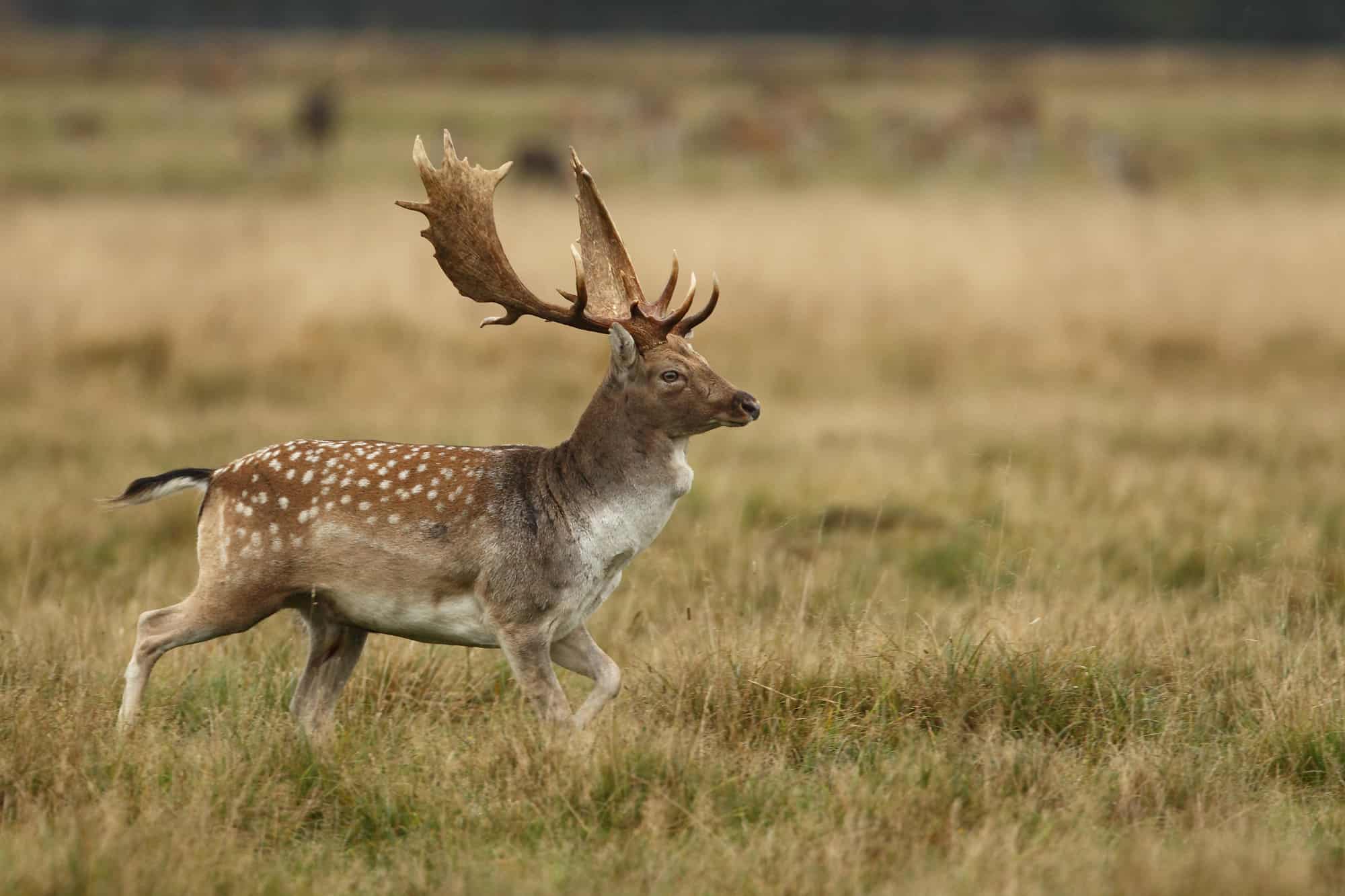
| Scientific Name | Dama dama |
| Where it lives | Originally from Europe, now found worldwide |
| What it eats | Herbivorous, feeds on grasses, leaves, and crops |
| Conservation Status | Least Concern |
Fun Fact: Fallow deer have spots even when fully grown.
Fallow Deer are native to Europe, Asia Minor, and North Africa. However, they have been introduced as game animals to many other parts of the world.
Fallow deer are reared not just for their meat but also for the velvet on male antlers. It is said to have medicinal properties. These animals weigh between 130 and 330 pounds and often have spotted coats.
2. False Widow Spiders
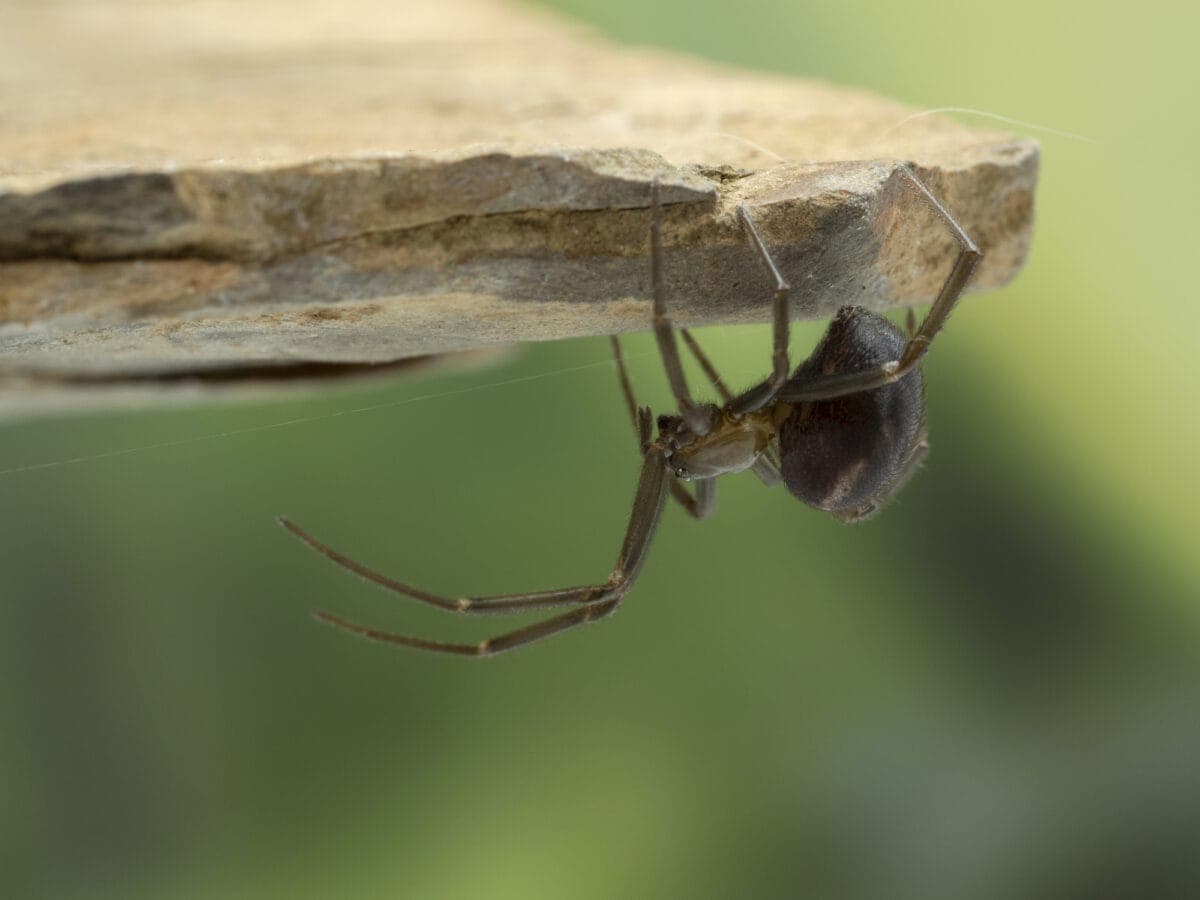
| Scientific Name | Steatoda spp. |
| Where it lives | Found in urban and suburban areas, often near human dwellings |
| What it eats | Carnivorous; preys on insects such as flies, ants, and beetles |
| Conservation Status | Not assessed |
Fun Fact: False Widow Spiders might benefit humans, as they eat household pests.
False Widow Spiders are usually mistaken for Black Widows, hence the name. But they are pretty harmless. These spiders originated from the Canary Islands and Madeira but have found their way worldwide.
These tiny spiders are normally dark brown or black with distinct markings that resemble a black widow. Although they are venomous their bites are not often serious enough to require medical attention.
3. Fangtooth Fish
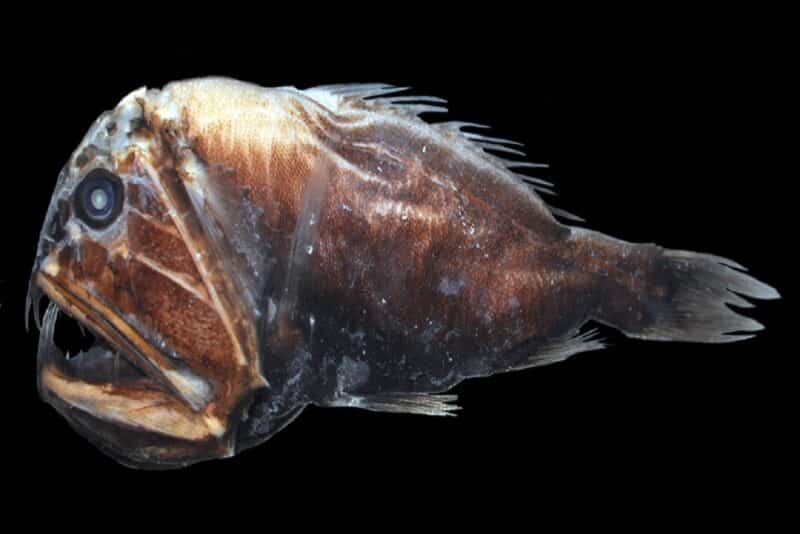
| Scientific Name | Anoplogaster cornuta |
| Where it lives | Deep ocean waters, depths of 200 to 2,000 meters (660 to 6,560 feet) |
| What it eats | Carnivorous; feeds on small fish, squid, and crustaceans |
| Conservation Status | Not assessed due to its deep-sea habitat and limited human interaction |
Fun Fact: Fangtooth Fish’s lower Jaws are so large that it had to evolve special sockets to accommodate them.
Fangtooth Fish aren’t winning any beauty contests anytime soon. It has a grotesque look and oversized teeth. But those features are what enable it to survive in the deep twilight zone.
These vicious fish are only about six inches long, with large sharp teeth. Their large eyes help them to hunt in the darkness of the deep sea.
4. Fennec Fox
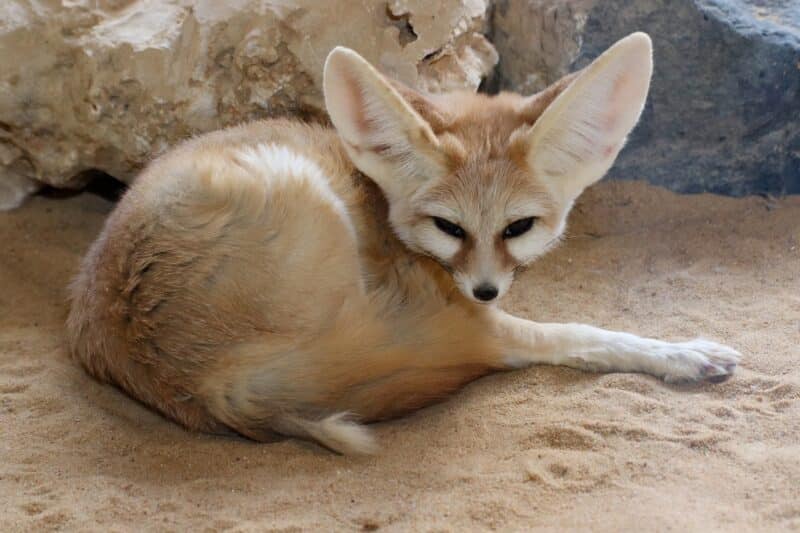
| Scientific Name | Vulpes zerda |
| Where it lives | Arid desert regions of North Africa, including the Sahara |
| What it eats | Omnivorous, eats insects, small mammals, and plants |
| Conservation Status | Least Concern |
Fun Fact: Fennec foxes are the smallest species of fox in the world.
Fennec Foxes make their home in the deserts of Northern Africa. They have huge ears that help them regulate heat and also detect prey.
These foxes are very small only weighing between 1.5 and 3.5 pounds! These nocturnal animals are skilled diggers and hunters to help them survive in their habitat.
5. Ferret
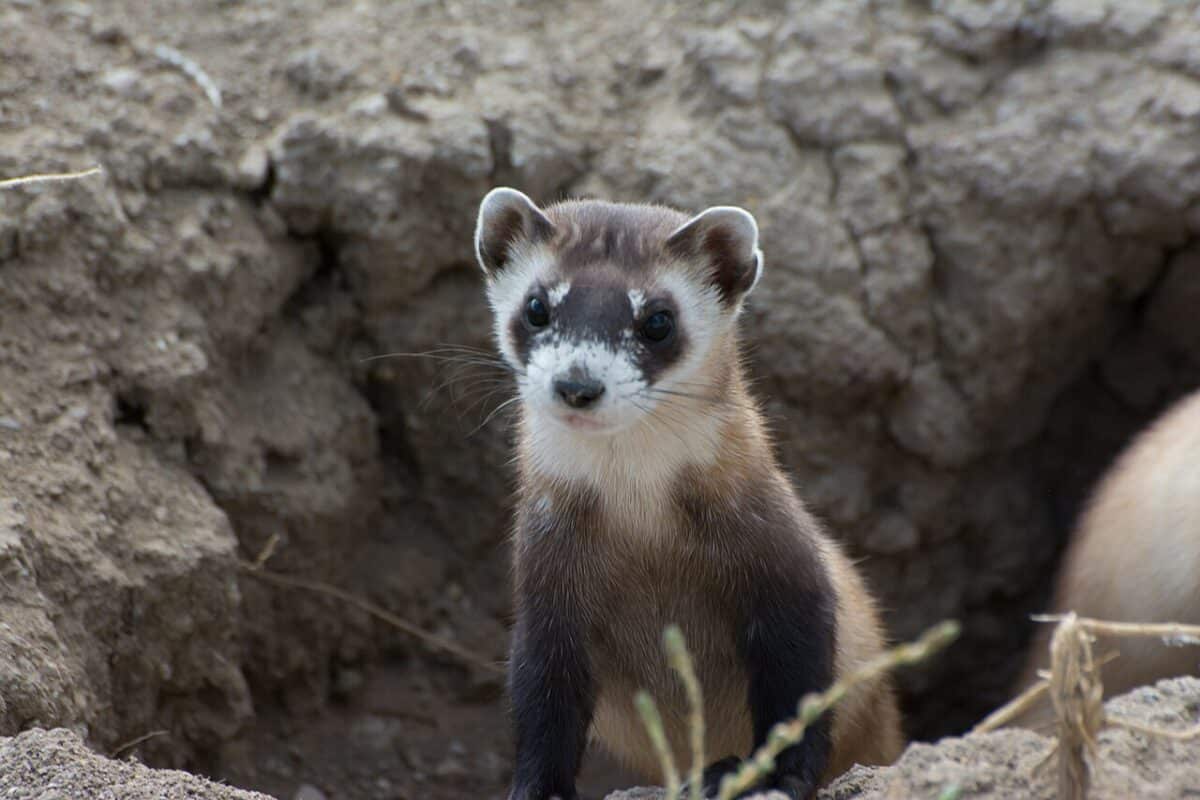
| Scientific Name | Mustela putorius furo |
| Where it lives | Europe, Asia, Africa |
| What it eats | Carnivorous |
| Conservation Status | Some species are Endangered and others are of Least Concern |
Fun Fact: Ferrets have a very high heart rate of 200 to 250 beats per minute.
Ferrets are carnivorous animals with long, slender bodies and short legs. These animals have been used for hunting rodents like mice and rats for centuries.
Humans can train ferrets to do tricks, and as such, they make good pets. These medium-sized animals have slender bodies with fur coats and markings on their faces. Ferrets are highly energetic and curious creatures – true busybodies.
6. Fiddler Crab
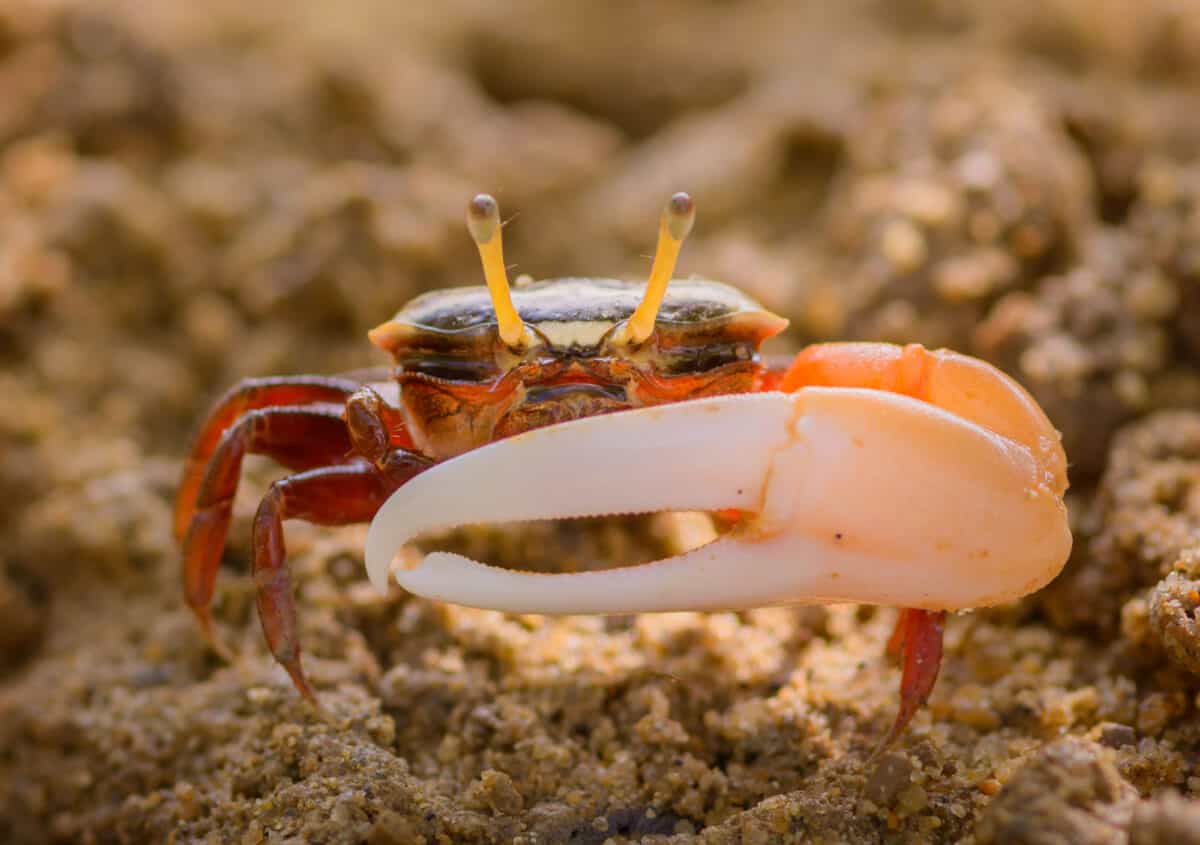
| Scientific Name | Uca spp. |
| Where it lives | Coastal regions, sandy or muddy shores, mangroves, estuaries |
| What it eats | Omnivorous, eats algae, detritus, small invertebrates |
| Conservation Status | Not assessed |
Fun Fact: Female Fiddler crabs pick a mate based on the size of the enlarged claw and the male’s fiddling display.
Fiddler crabs are a species that can live both in the sea and on land. Their habitats may include saltwater bodies or estuaries.
Their name comes from the males’ fiddling motion while counting a mate. One noticeable feature of the males is the enlarged claw, which they use for communication and mating.
7. Fin Whale

| Scientific Name | Balaenoptera physalus |
| Where it lives | Oceans worldwide, temperate and polar waters |
| What it eats | Carnivorous, feeds on small fish and krill |
| Conservation Status | Endangered |
Fun Fact: Fin whales can be found in many oceans around the world because they migrate all year round.
Fin whales are some of the largest animals on earth, in fact, they are the second-largest whale species! However, their size doesn’t hinder them, as they can maintain 25 miles per hour speeds.
Despite their size, Fin whales don’t eat other animals. Instead, they are filter feeders.
8. Fire Salamander
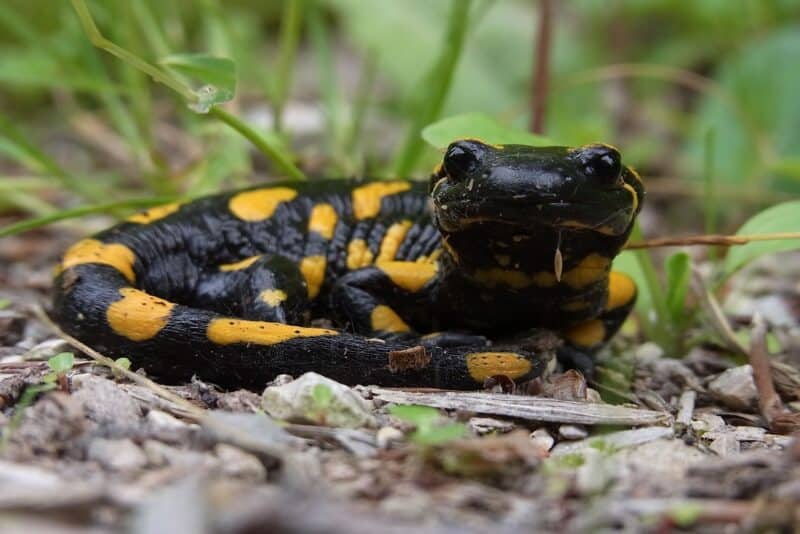
| Scientific Name | Salamandra salamandra |
| Where it lives | Deciduous forests, wooded areas, near water sources |
| What it eats | Carnivorous, feeds on insects, spiders, worms, and small vertebrates |
| Conservation Status | Near Threatened |
Fun Fact: Fire Salamanders give birth to their young alive, a rarity in the reptile world.
Fire Salamanders were once thought to be born from fire, and that’s where the name comes from. Their bright colors are indicative of the poison in their skin.
Thanks to their bright colors and large size, Fire Salamanders are usually kept as pets.
9. Fire-bellied Toad

| Scientific Name | Bombina spp. |
| Where it lives | East Asia and Europe |
| What it eats | Carnivorous, eats insects, invertebrates, tadpoles |
| Conservation Status | Least Concern |
Fun Fact: Fire-bellied Toads catch prey with their mouths instead of a sticky tongue.
Fire-bellied toads are found in parts of China, North and South Korea, and Russia. These tiny amphibians can live for 12-15 years in the wild.
The poison on their skin deters predators while they eat insects, snails, and plant materials.
10. Firefly
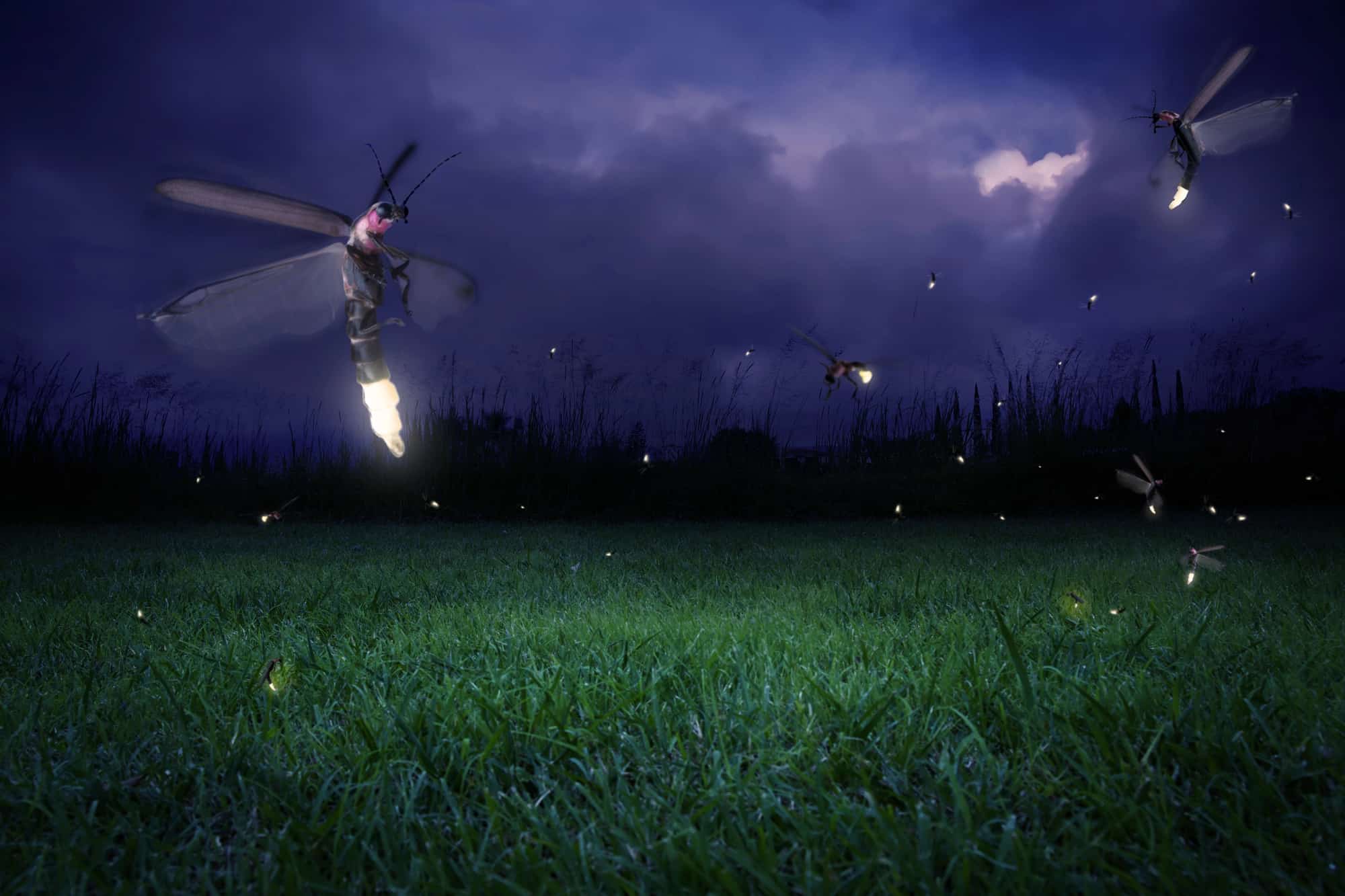
| Scientific Name | Lampyridae family |
| Where it lives | Various, grasslands, forests, wetlands |
| What it eats | Larvae are predatory; adults consume nectar and pollen |
| Conservation Status | Varies; some threatened by habitat loss and light pollution |
Fun Fact: Firefly bioluminescence is very effective, as nearly 96% of the reaction’s energy is turned to light.
Fireflies are truly just magical little creatures. Anyone who has watched a single Disney princess movie knows about fireflies. Yes, they do produce light from their bodies. And they do other things than fly around couples during romantic moments.
These nocturnal flying insects use their bioluminescence for mating and communication.
11. Fisher Cat
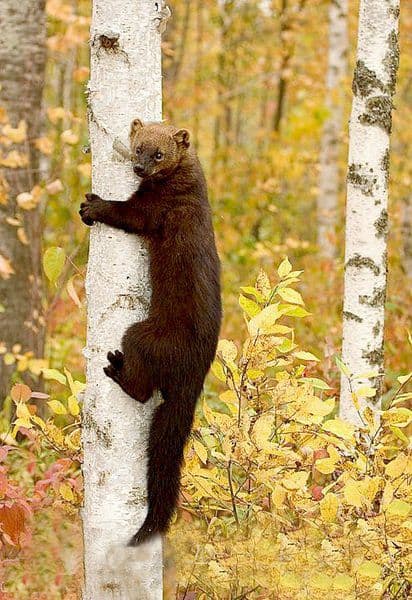
| Scientific Name | Pekania pennanti |
| Where it lives | Forested areas of North America, including mixed and coniferous forests |
| What it eats | Carnivorous, preys on small mammals like squirrels, rabbits, and mice |
| Conservation Status | Least Concern |
Fun Fact: This is one of the few animals that can prey on porcupines successfully.
Fisher Cat neither eats fish nor is a cat. Instead, it’s called that because of its resemblance to the European polecat.
These animals are medium-sized with dark brown fur and a bushy tail. They live solitary and territorial lives, partaking in activities both during the day and night.
12. Flamingo
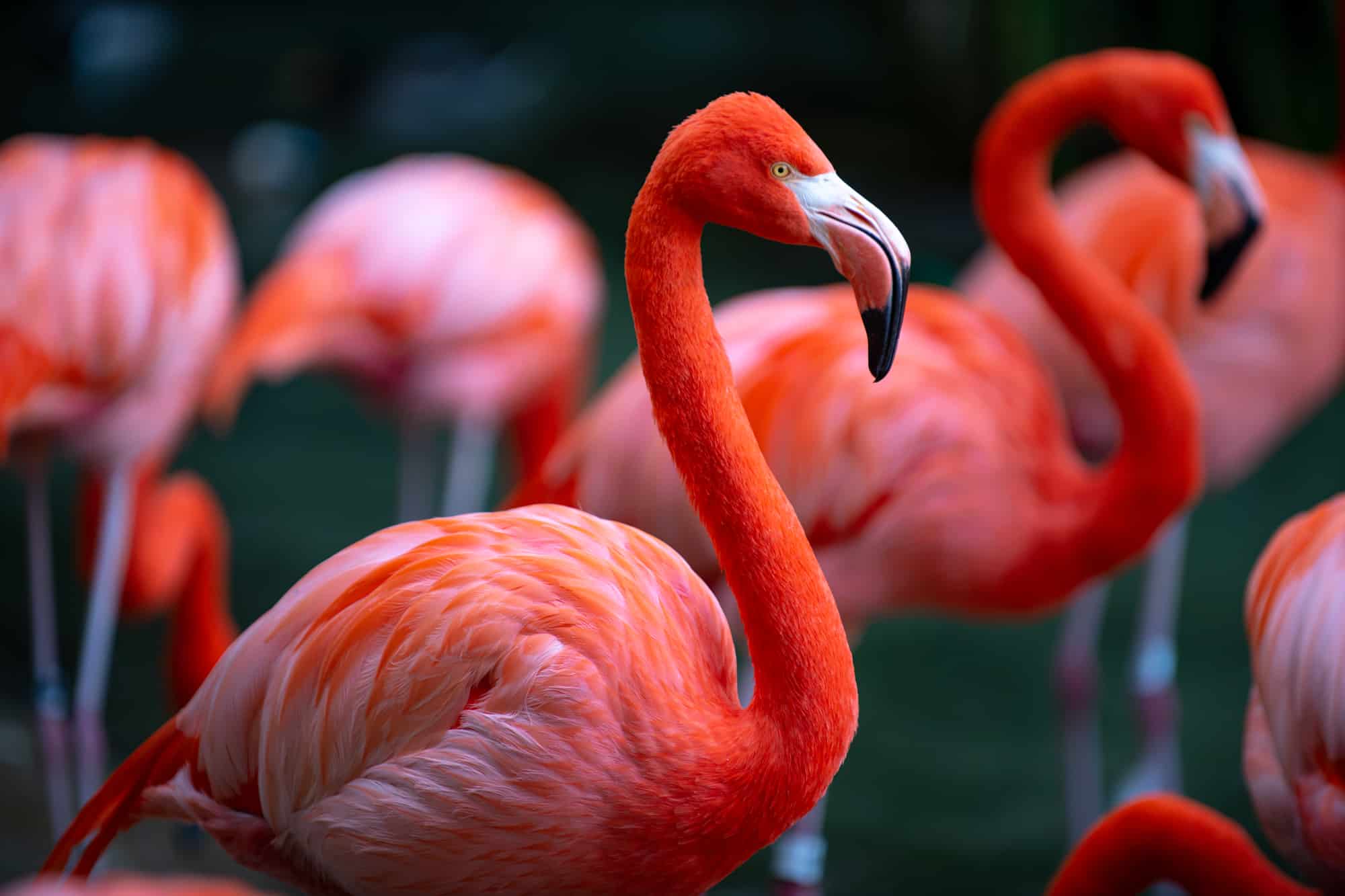
| Scientific Name | Phoenicopteridae family |
| Where it lives | Various wetlands, lakes, lagoons |
| What it eats | Filter feeders – algae, small crustaceans |
| Conservation Status | Not Extinct |
Fun Fact: When Flamingos sleep, they balance on a single leg.
Flamingos are beautiful water birds that have pink feathers and long spindly legs. They have webbed feet that enable them to move across water bodies.
These social birds live in large flocks where they can wade in peace while hunting for prey.
13. Flea
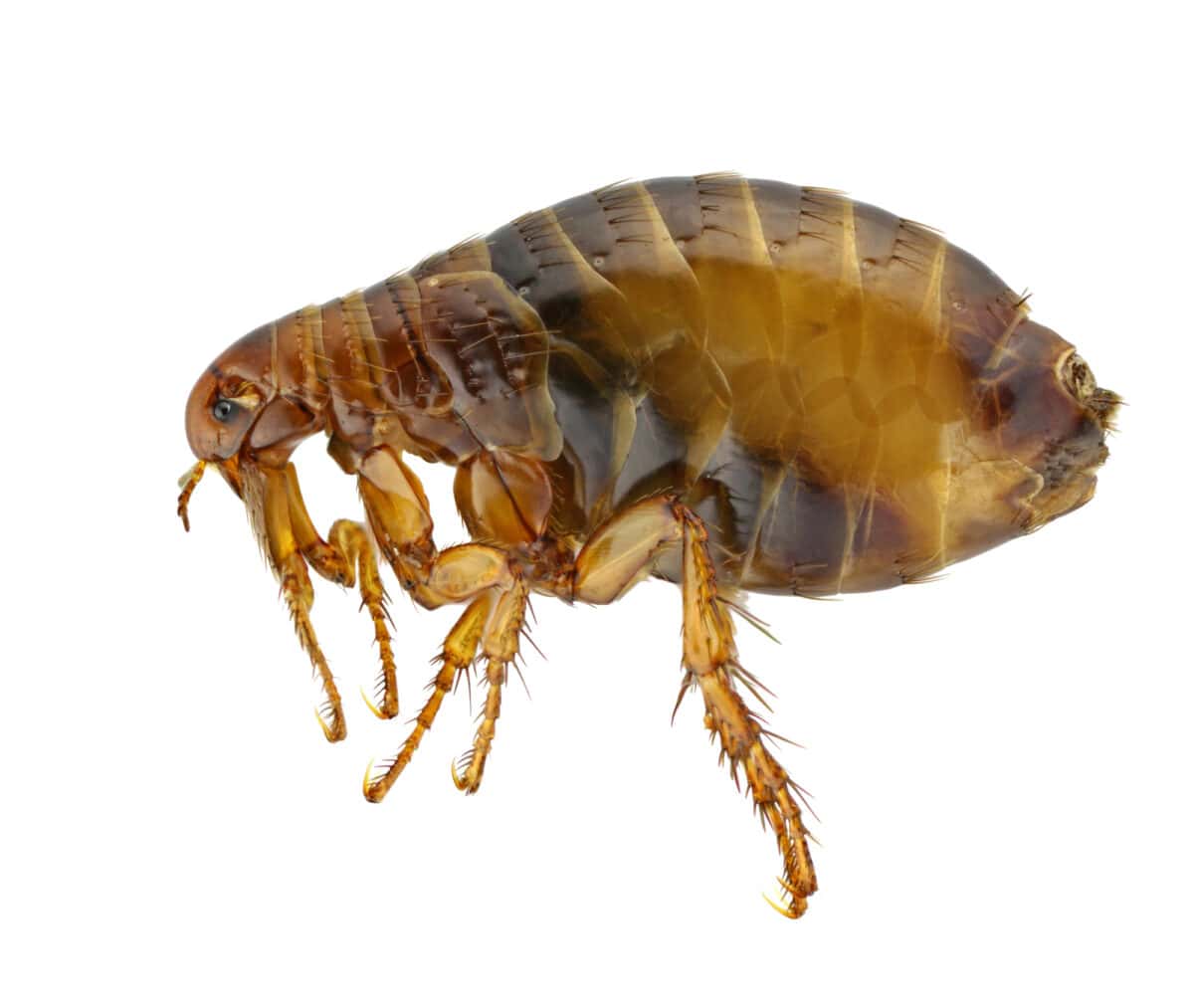
| Scientific Name | Siphonaptera spp. |
| Where it lives | Parasitic, found on mammals and birds |
| What it eats | Primarily feed on host blood |
| Conservation status | Not Extinct |
Fun Fact: Fleas can jump nearly seven inches high.
Fleas are notorious pests and Pet owners probably see these insects in their nightmares. These pests transmit a lot of diseases with their bites.
These flat-bodied and wingless insects have strong hind legs and can transmit diseases like typhus and the bubonic plague.
14. Florida Gar
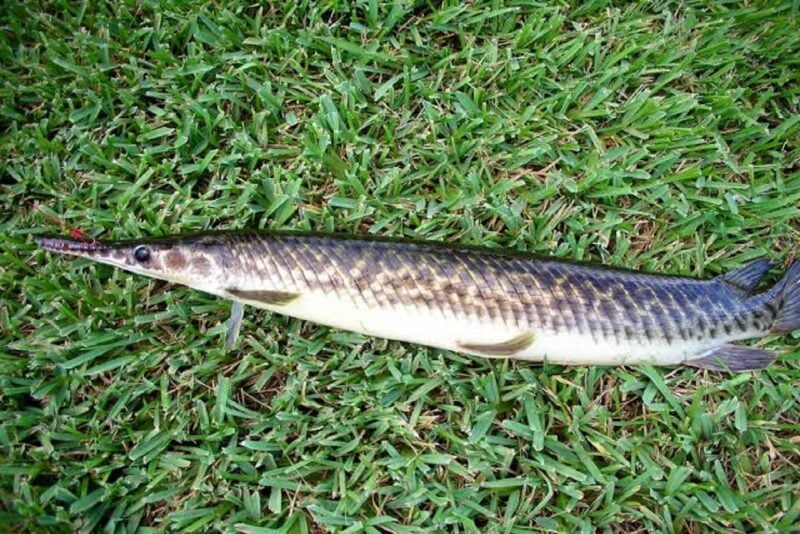
| Scientific Name | Lepisosteus platyrhincus |
| Where it lives | Freshwater habitats, including lakes, rivers, and swamps |
| What it eats | Carnivorous, feeding on fish, crustaceans, and small vertebrates |
| Conservation Status | Least Concern |
Fun Fact: The Florida Gar survives the dry season by burrowing into the sediments and slowing its metabolism.
Florida Gar, as the name suggests, is usually found in Florida. It has a long narrow body and sharp teeth. It also has gulls that can double as lungs to help it breathe air.
These solitary and territorial animals are often seen submerged in vegetation where they lurk waiting for an opportunity to strike prey.
15. Flounder
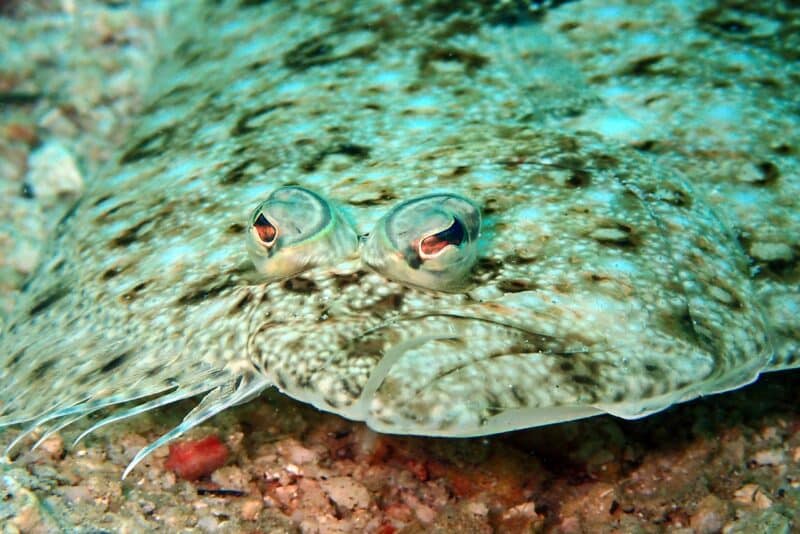
| Scientific Name | Pleuronectidae family |
| Where it lives | Coastal regions, sandy or muddy seabeds |
| What it eats | Carnivorous, eats small fish, crustaceans, and invertebrates |
| Conservation Status | Varies, some face overfishing pressure |
Fun Fact: Some Flounders can even change colors to better blend into their surroundings.
Flounder fish are popular bottom-dwelling fish that capture prey by ambushing. These fishes are a famous cuisine, and as such, are in danger of reducing population.
They have flat bodies with eyes sitting close together, and grow between 10 and 30 inches in size!
16. Flying Fish
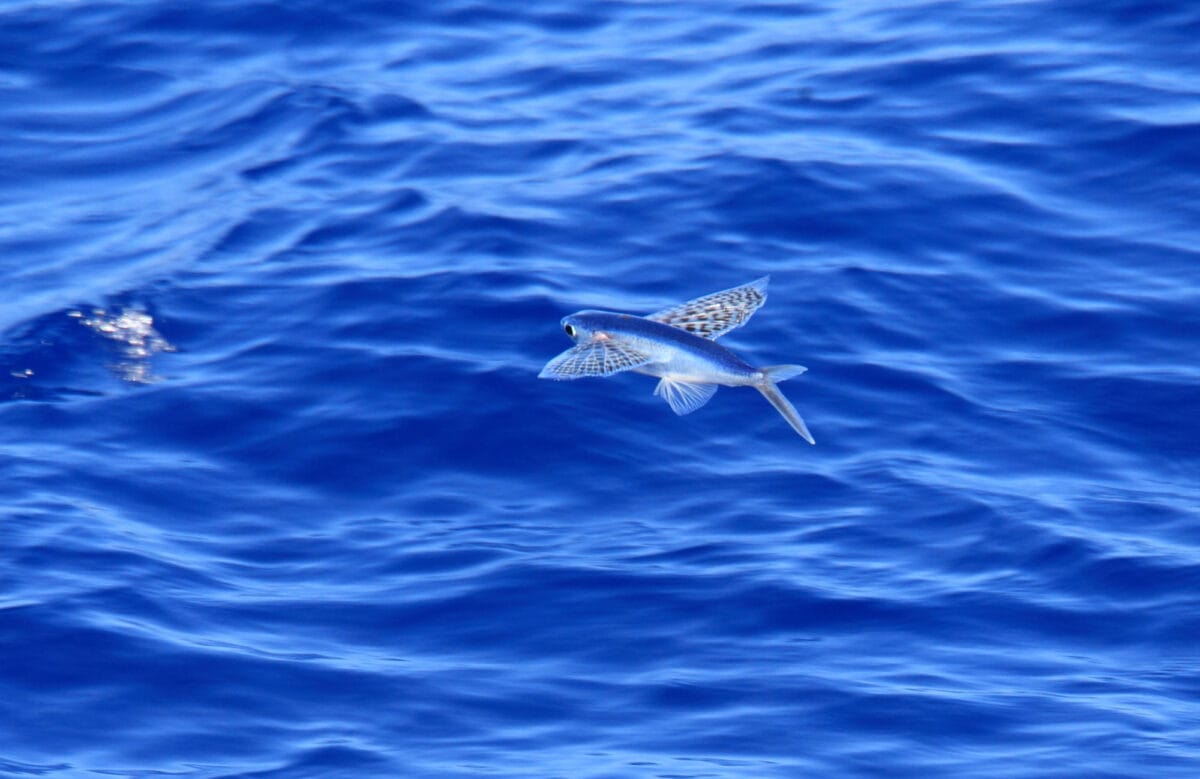
| Scientific Name | Exocoetidae family |
| Where it lives | Tropical and subtropical oceans, particularly near the surface |
| What it eats | Carnivorous, feeds on plankton and small fish |
| Conservation Status | Varies, some species may face threats from habitat degradation and overfishing |
Fun Fact: Flying fish can glide for more than 650 feet.
Flying fish actually fly! The pectoral fins of these fishes are modified to serve as wings. They enable them to leap out of the water and glide. This helps them escape predators.
These fish are excellent swimmers and use their fins to glide and escape from predators.
17. Freshwater Crocodile
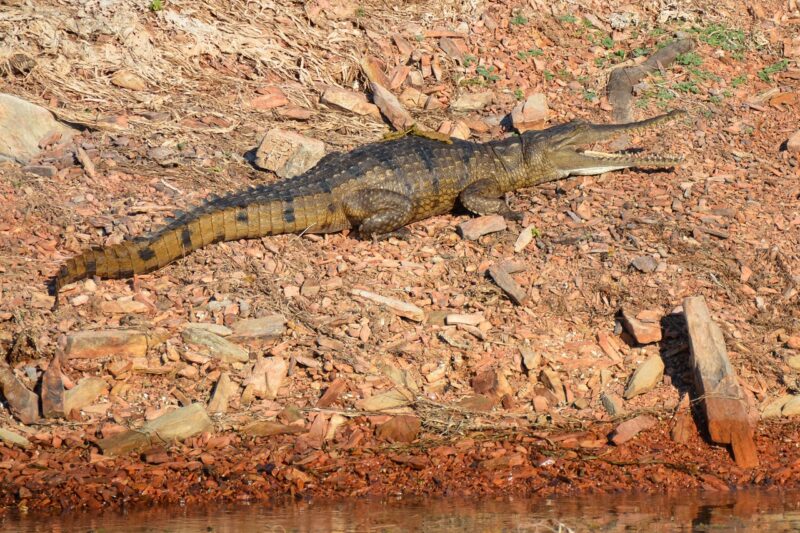
| Scientific Name | Crocodylus johnsoni |
| Where it lives | Freshwater habitats such as rivers, lakes, and swamps in northern Australia |
| What it eats | Carnivorous, preys on fish, crustaceans, and small mammals |
| Conservation Status | Least Concern |
Fun Fact: Sexual maturity in freshwater crocodiles is achieved once they reach 4.9 feet long.
Freshwater crocodiles are not a danger to humans. That might be a shock, but saltwater crocodiles are the dangerous ones.
These nocturnal animals spend their days baking in the sun and grow to about 9.8 feet in size.
18. Frilled Lizard
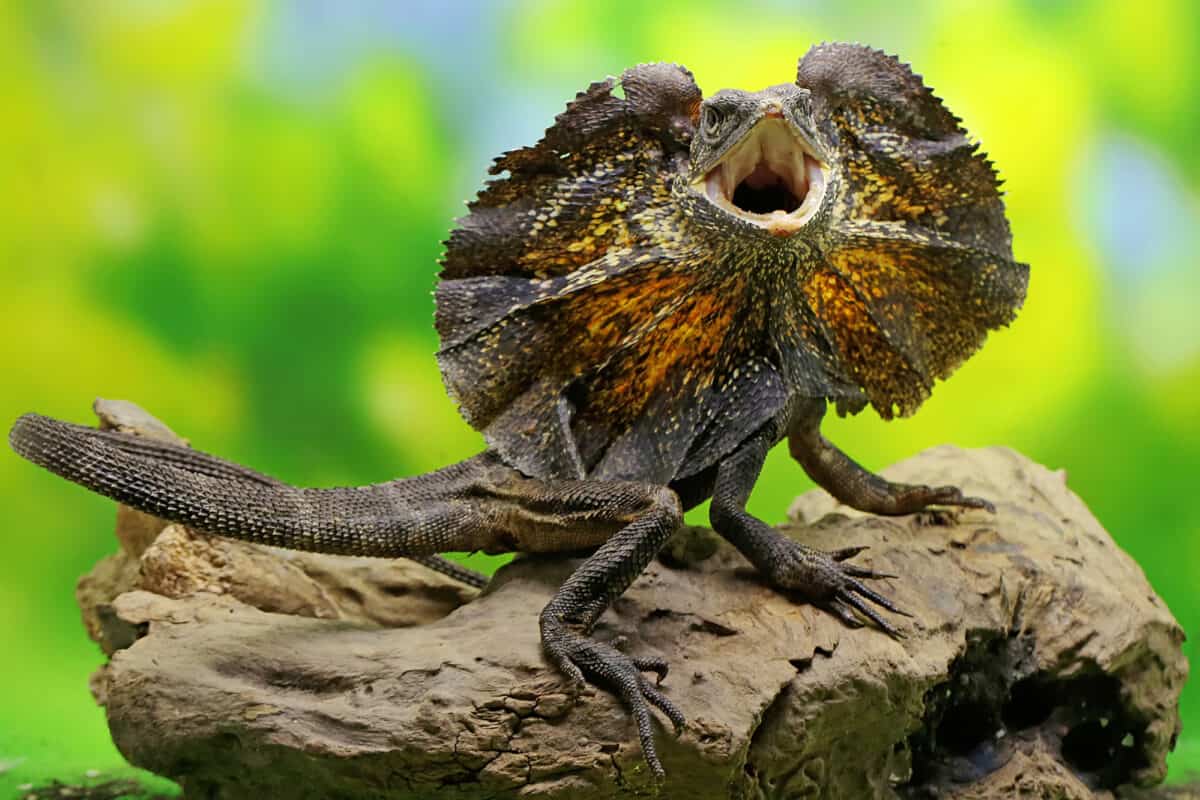
| Scientific Name | Chlamydosaurus kingii |
| Where it lives | Woodlands, tropical forests of northern Australia |
| What it eats | Insectivorous, eats insects, small vertebrates |
| Conservation Status | Least Concern |
Fun Fact: Frilled lizards are usually kept as exotic pets, but they need a lot of care.
Frilled Lizards definitely look scary. Thanks to the frill around its neck, which it raises when threatened. But there’s no need to worry, as it isn’t poisonous.
They grow between 28 and 35 inches in length.
19. Frogfish
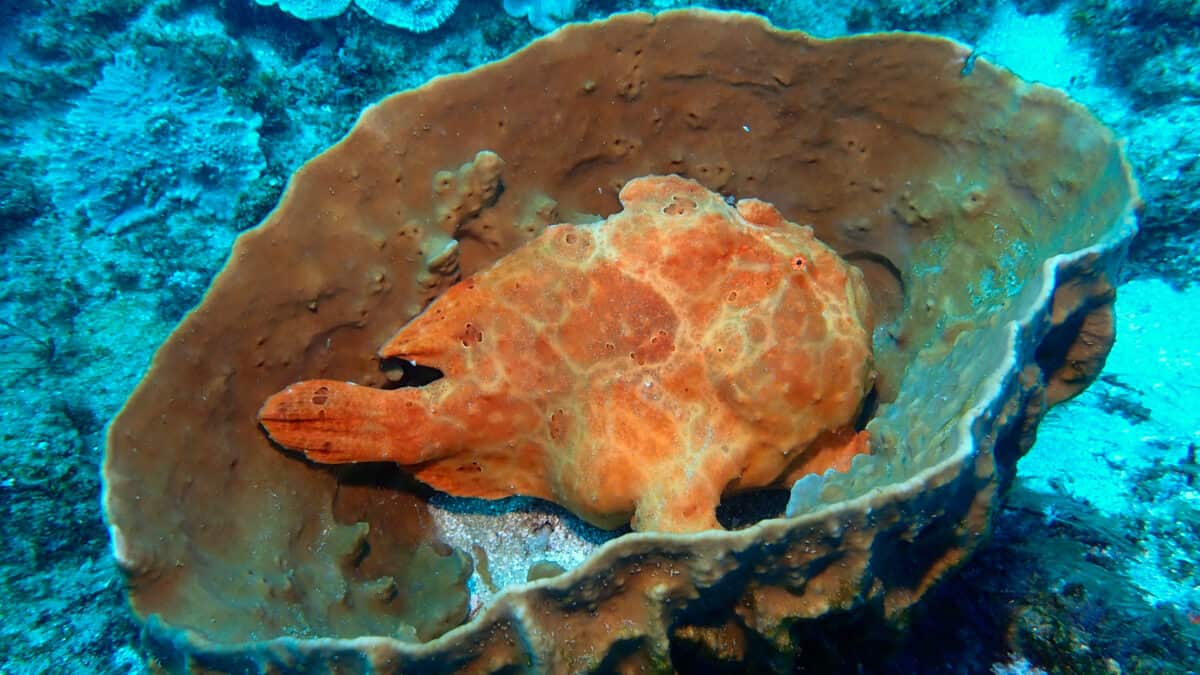
| Scientific Name | Antennariidae spp. |
| Where it lives | Tropical and subtropical oceans, typically found near coral reefs and rocky bottoms |
| What it eats | Carnivorous, ambush predators that feed on small fish and crustaceans |
| Conservation Status | Data Deficient |
Fun Fact: Frogfishes don’t swim. Instead, they propel themselves with water from openings in their gills.
Frogfishes are scaleless and are found in the deeper parts of the ocean. They stay motionless and use lures to draw in prey, then strike in milliseconds.
These well-camouflaged fish lure their prey with their striking appearance.
20. Fruit Fly
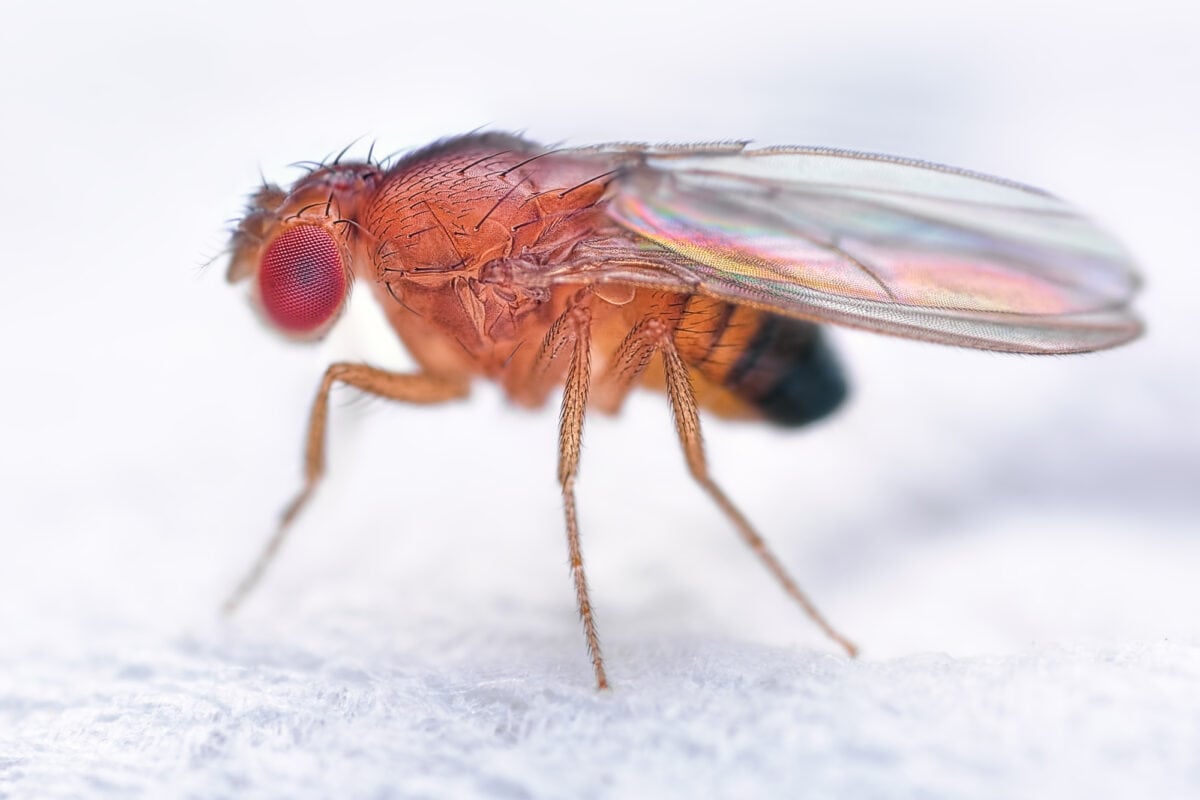
| Scientific Name | Drosophila melanogaster |
| Where it lives | Ubiquitous, found worldwide wherever suitable food sources are available |
| What it eats | Omnivorous, feeding on decaying fruits and other organic matter |
| Conservation Status | Not Extinct |
Fun Fact: Fruit flies can beat their wings up to 250 times in a second.
Fruitflies can usually be found around decomposing fruit, meat, and organic materials. They typically live for about 25-50 days.
Although they have a short lifespan, these flies reproduce at impressive speeds. They lay their eggs in fermenting fruit and other organic materials.
Summary of Animals that Start with F
And we’ve gotten to the end of the list. We hope you love it. Now hasten to this list of animals that start with D. A lot of fun animals await.
You might also like to read about our other Animal Letter Lists.
- Animals That Start With A
- Animals That Start With B
- Animals That Start With C
- Animals That Start With D
- Animals That Start With E
- Animals That Start With G
- Animals That Start With H
- Animals That Start With I
- Animals That Start With J
- Animals That Start With K
- Animals That Start With L
- Animals That Start With M
- Animals That Start With N
- Animals That Start With O
- Animals That Start With P
- Animals That Start With Q
- Animals That Start With R
- Animals That Start With S
- Animals That Start With T
- Animals That Start With U
- Animals That Start With V
- Animals That Start With W
- Animals That Start With X
- Animals That Start With Y
- Animals That Start With Z
Thank you for reading!
Join our Forum for free today!

- These are The 5 Largest Great White Sharks Ever Recorded - July 19, 2024
- The Surprising Benefits of Big Game Hunting - July 18, 2024
- $100k+ Hunting Experiences The Most Expensive Animals to Pursue - July 17, 2024

